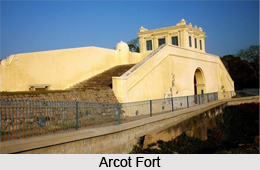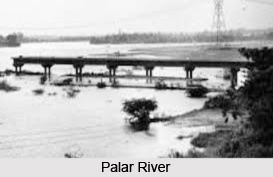 Arcot is one of the fast developing cities of Tamil Nadu. Most of the people of Arcot are literate. The reason for fast development in Arcot is due to the influence of Danish missionaries who settled in Arcot during the earlier centuries. Later Arcot came in the hands of British East India Company and later British Government of India.
Arcot is one of the fast developing cities of Tamil Nadu. Most of the people of Arcot are literate. The reason for fast development in Arcot is due to the influence of Danish missionaries who settled in Arcot during the earlier centuries. Later Arcot came in the hands of British East India Company and later British Government of India.
History of Arcot
According to the medieval history in 1712, the Muslim Nawab of Karnataka captured Arcot from the Marathas. In 1751, Robert Clive (the first Baron Clive of Battle of Plassey) captured Arcot during the conflict between the United Kingdom and France for control of South India. He is widely regarded as a key figure in the establishment of British India.
During the period 1717-1795, Mohamed Ali Khan Walajan became the Nawab of Arcot. He was an ally of the British East India Company. He adored the English people and emulated their customs and manners. His successors soon ran up enormous debts at the hands of English speculators. In 1801, Arcot was annexed by the British East India Company. During the 20th century, Arcot lost importance and was incorporated into the district of Vellore, a city in Tamil Nadu.
Geography of Arcot
Arcot is a city in the Vellore district of Tamil Nadu. Arcot is located on the banks of Palar River. Arcot is located at 12.9 degree north to 79.33 degree East. It has an average elevation of 164 metres.
 Economy of Arcot
Economy of Arcot
The people of Arcot are mainly farmers. Arcot is the principal market for the surrounding agricultural area. Arcot also has a local weaving industry and ground nut oil industry. Arcot is popular for the Star Biriyani and sweets as Makkan Beda.
Culture of Arcot
The people who live in Arcot, especially those who live near the temple town of Tiruvannamalai belong to the clan known as Arcots. These people were warriors and landowners and descended from ancient Dravidians and Hindu Marathas. The Arcot region is one of the quickest areas in Tamil Nadu to develop due to the influence of Danish missionaries. These missionaries established many schools and hospitals in the surrounding villages with the support of Arcots. Today, the region is fast flourishing with learned men and women. Arcot owes much to the Danish missionaries and volunteers for sowing the seeds of progress by establishing schools and colleges.
Demography of Arcot
According to the Population Census in the year 2011, the population of Arcot is 50,267. Males constitute 50% of the population and females 50%. The average literacy rate of Arcot is 75%, which is higher than the national average of 59.5%. In Arcot 54% of the males and 46% of females are literate.
Tourism in Arcot
Arcot has famous temples. They are Sri Sundaramoorthi Vinayagar Temple, Sri Ramakrishna Shrine, Sri Devi Karumari Amman Temple, Sri Kasi Viswanathar Temple, Sri Varadharaja Perumal Temple, Sri Maha Ganapathy Temple and some more places of interests in and around Arcot are Delhi Gate, which is an 18th Century Architecture, Raja Rani Tank, Green Mosque, Pancha Pandavar Mountain, Green Thunder, water theme park in North Arcot District.



















